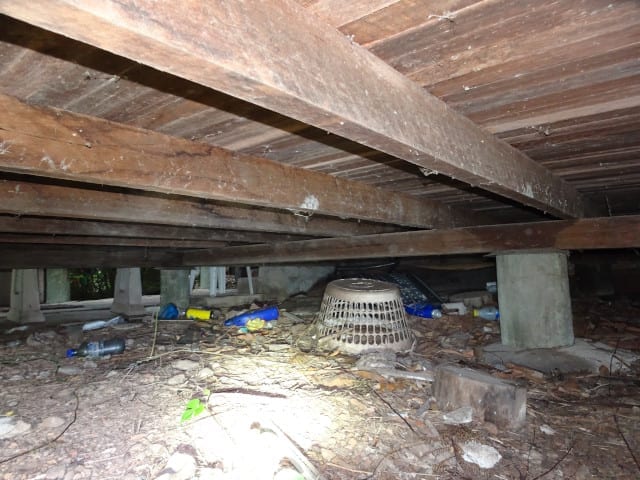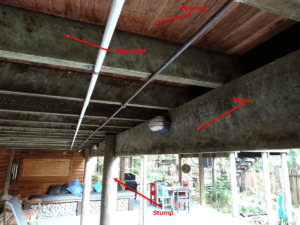Location and names of sub-floor components.
Sub-floor components. Helping non-builders gain a better understanding of how timber framed houses are supported and structured. QBIS.
These are photos are typically constructed high-set or two storey houses. The only differences being is that sub-floor structures of purpose built two storey houses are usually covered with sheeting although they are structured the same.
Sub-floor and components of a high-set house on timber stumps.
Typical sub-floor construction of a high-set timber house. Sub-floor of this type of house cannot be converted for use as a living area without raising the building to the required height to achieve building code requirements. This is not likely to be an economically viable consideration with most high-set houses.
Why some sub-floors are split level construction.
Split level is a method of construction used where the upper floor levels are different. This type of construction is often used on a steep sloping block of land. Otherwise the building would need to be far greater in height and may not be achievable if higher than building code requirements.
Worth knowing if considering conversion of a sub-floor to a habitable area.
The majority of home buyers do not realise that Ceiling heights are not the only requirement of a sub-floor area needed to conform with Council requirements for use as habitable areas. This is only one requirement of a number to conform with building code for habitable areas.
Advantages of timber sub-floor and structure compared to house on a slab.
- Opportunity for storage and/or parking of vehicles.
- Allows for much easier detection of termites also barriers to be installed.
- Easy access of plumbing and electrical cables.
- Detection of leaking below wet areas.
- Possible potential for conversion to living area.
- Houses on slabs are prone to termite damage.


